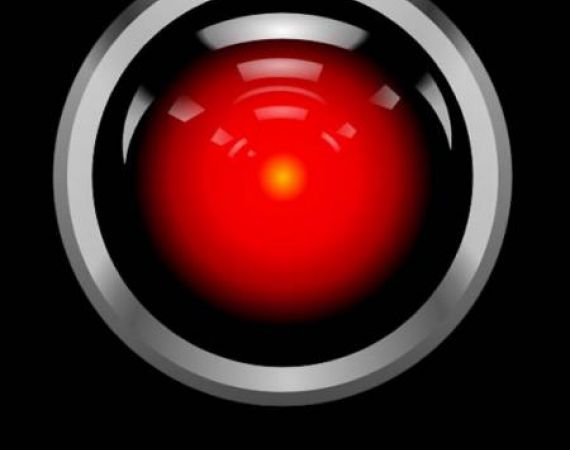Posted on Mon 10 May 2010
Plumping is essential: developing emotions in computers to help ourselves.
Cast your imagination forward to a time when there are no special people called ‘artists’ who make sanctified ‘art’ but eve

Posted by

Hazel Grian
A pioneer of interactive drama, specialising in robots, Hazel began as a live performer & filmmaker. In a 35 year career, she is driven by her ambition to bring stories to audiences by ‘any medium necessary’.Cast your imagination forward to a time when there are no special people called ‘artists’ who make sanctified ‘art’ but everyone is recognised as creative and what we all create is available everywhere. ‘Aagh! Imagine all the crap all over the place, look at YouTube!’ your Daemon yells. Context dear friend, you retort to your inner critic, it’s all about the context. Personally I do not feel at all comfortable labeling myself an artist but I don’t mind thinking of myself as someone who delivers emotional experiences in different contexts, although admittedly this is not a very snappy title. However, I’m currently getting a lot from Affective Computing, scientist Rosalind Picard’s seminal introduction to the idea of emotional computers, in which she can‘t help but highlight differences between scientific and artistic approaches. I’m discussing her ideas in this and a few of my next blog entries so for ease I’m referring tomyself as an ‘artist’, that is someone whose stock in trade is emotion, delivered by use of technology.
How do artists ever make decisions? It’s hard enough to decide what knickers to wear in the morning. So how do we artists work out what exactly is going to be happening in our art? Firstly one ‘researches’, soaking up information from many sources with an openmind (or if you like, wandering about a bit on your own) until eventually an initial decision is taken, the idea begins to take shape and we start writing,making images, noises whatever. But how are these decisions reached, not justby artistic types but by everyone? According to Rosalind Picard non of us:butchers, bakers, computer chip makers, can take any decision without comingover all emotional. Accepted wisdom trains us to believe that emotion meanspoor judgement and irrational behaviour, it’s inappropriate, embarrassing, a stigma, non scientific, on the sidelines, a luxury. On the contrary Picardannounces, emotion plays an essential role in rational decision making,learning and other cognitive functions. Emotion, she says, is in fact a fundamental part of perception itself. This apparently is big news to scientists, even the female ones. Artists deal in emotion but again contrary topopular belief, we do also uselogic and rationality as part of our processes: it would be impossible tocommunicate ideas or get anything done or without it. Picard’s point is that all perception, whether deciding on knickers or directing Avatar, requires both emotionality and rationality: they are not polar opposites indeed they cannot be separated.
We make decisions by weighing up the possibilities and then going by ‘gut feelings’ or ‘instinct’ to finallydecide. Computer programmers tend to do everything they can to avoid emotion hence computers are not built to understand emotion, they are built entirely on a model of logic. But intelligence is not comprised of logic alone, it requires emotional skills to allow us to deal with valence: that is whether we feel positive or negative towards something, howwe decide what is right and wrong in any context. If Mr Spock wasn’t half human he would be a crap member of the Star Fleet crew, endlessly considering the options but never coming up with a conclusion. If he was all purely logicalVulcan, he wouldn’t be able to ‘plump’ for anything. It’s our human ability to ‘plump’ that makes usintelligent. According to Picard, emotions are essential to intelligence and to creative and flexible problem solving. Our sense of valence, what we ‘plump’ for, is what we generally refer to as ‘gut feelings’ and ‘instinct’. (This is closely associated with‘morality’ or ‘taste’, which are not naturally occurring ‘truths’ but based on all the symbolic cultural meanings we’ve picked up from our surroundings through out our lives. See my other blog post on French Sociologist Bourdieu’s study of taste andclass.)
For Picard, emotions influencethe very mechanism of rational thinking. Emotional skills especially the ability to recognise and express emotions are essential for natural communication with humans. So now science has given the thumbs up to emotion, women may stop being chastised for it, men can stop fearing it and computers may be developed to have emotional intelligence. Perhaps as well as being the ying to your yang, the Daemon is a computer that has the ability to plump.